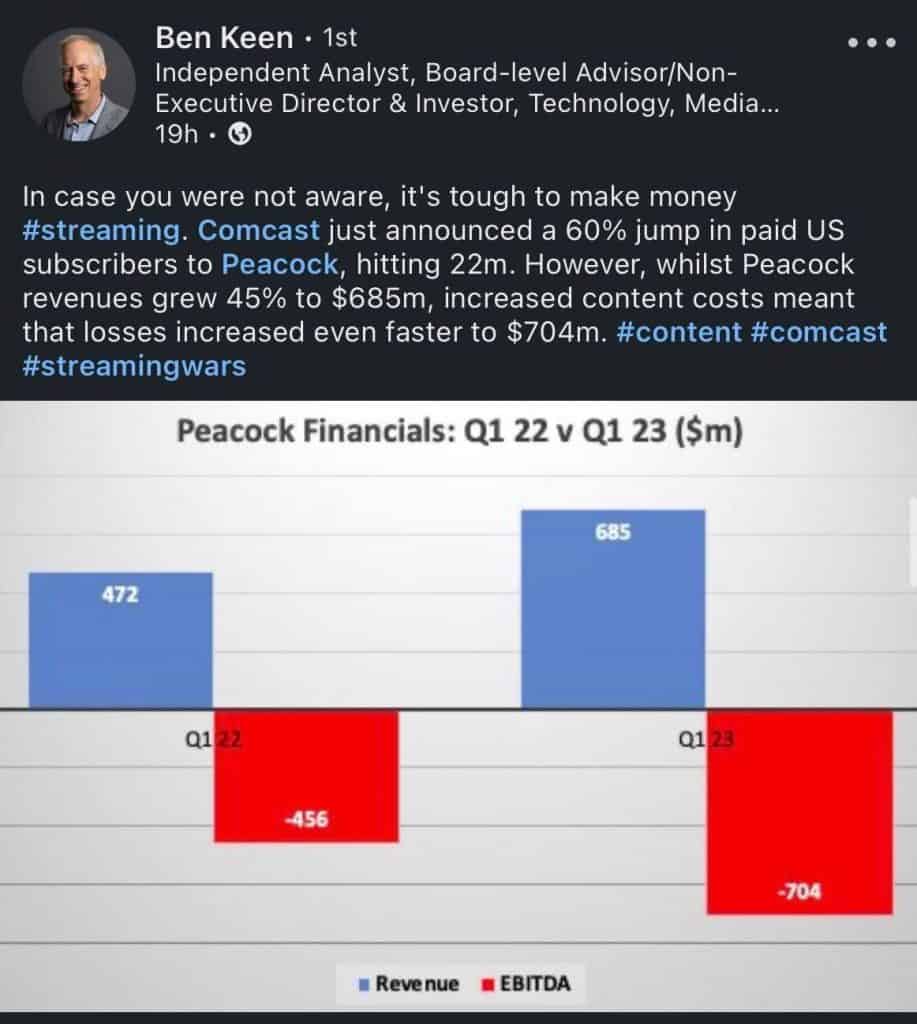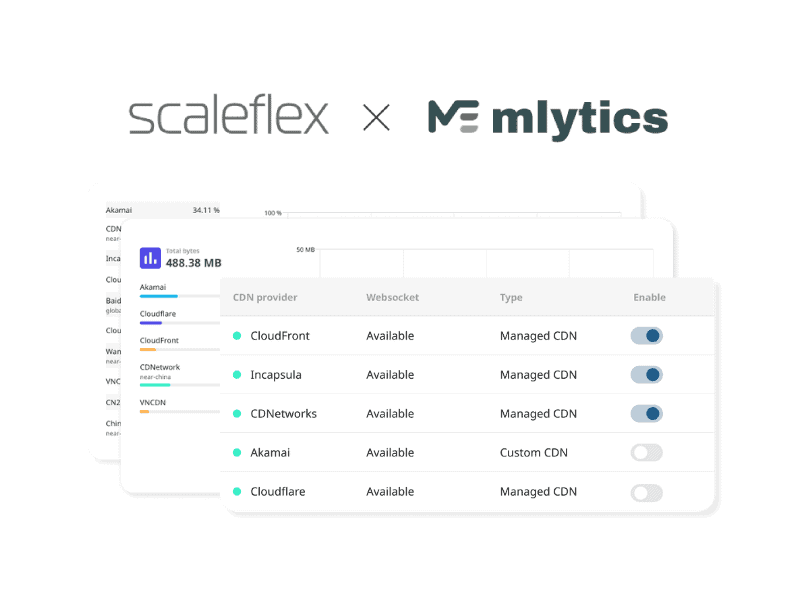This post is also available in: 繁體中文 简体中文
Video content monetization can often seem like a maze, filled with a multitude of strategies, technologies, and platforms to navigate. However, amidst this complexity, it’s essential to remember that one aspect remains at the heart of every successful monetization effort: analyzing and understanding your audience.
Ensuring your strategies align with your audience’s preferences, needs, and behaviors is the cornerstone upon which successful video content monetization is built. Let’s delve deeper into this crucial aspect and explore how to use it as the compass guiding your monetization journey.

Unlocking Monetization Potential with User Behavior Data
While monetization has traditionally been done through ad placements and subscription models, data analytics can offer a more targeted approach to generating revenue. User behavior data can unlock critical insights into the preferences of individual viewers, their engagement levels, and their unique viewing patterns. By analyzing this data, content providers can optimize their monetization strategy for maximum revenue generation.
One important metric to consider when evaluating monetization potential is watch time. Understanding which content is more engaging and can drive higher monetization allows providers to target users more effectively. Operating system and browser data are also useful fields to consider as they can help in targeting specific user segments and optimizing ad placements for better revenue.
Another vital data field is the user’s location. Analyzing country and city data provides essential insights into user preferences and trending content in specific regions. Customizing content for regional audiences can lead to higher user engagement, increased watch time, and ultimately, higher monetization potential.
Pre-defined scenarios offer additional ways to leverage user behavior data for content monetization. Personalized advertising, content optimization, international expansion, ad revenue optimization, and content personalization and recommendation are just some of the ways that data analytics can be used to maximize revenue.
- Personalized advertising, for instance, can create a more enjoyable advertising experience for users leading to increased ad revenue.
- Content optimization involves analyzing watch time and user engagement data, identifying popular content, and meeting audience preferences, which can increase watch time.
- International expansion is about investing in content localization, marketing, and partnerships tailored to different markets to increase user engagement and monetization.
- Ad revenue optimization means identifying viewer segments with the highest engagement levels and optimizing ad placements to improve revenue.
- Finally, content personalization and recommendation use data fields like video title, video series, and video language to develop personalized content recommendations based on viewer preferences. Understanding user behavior data is critical for generating revenue from video content. Content providers should leverage pre-defined scenarios and analyze data fields like watch time, location, and user engagement to create targeted monetization strategies. By doing so, they can unlock the full monetization potential of their content.
Identifying Global Market Opportunities with Regional Insights
Global market opportunities are endless, yet it’s crucial to have a strategic approach to identify them. Regional insights play a significant role in identifying opportunities within each market, enabling companies to develop tailored solutions and better communication approaches.
There are various data fields that companies can analyze to identify global market opportunities. One of these data fields is watch time, which indicates total playtime and helps to understand which content drives higher monetization. Operating systems and browser family fields provide information about user preferences and behavior, enabling companies to optimize ad placements and target specific user segments.
Another critical field is the country and city information that provides insights into the user’s geographical location. Companies can use this data to analyze trending content in specific regions and cater to audience preferences. With this, companies can customize their approach to different markets and strategize their global expansion plans.
Additionally, pre-defined scenarios provide more insight into monetization opportunities. Personalized advertising and content optimization are two of the scenarios that companies must consider. By analyzing user behavior, geographical location, and device information, companies can create more personalized advertising experiences for their users, leading to better ad targeting, higher engagement, and increased ad revenue.

The Power of Data-Driven Monetization Strategies
Data-driven monetization strategies have become essential for content providers to maximize their revenue-generating potential. By analyzing user behavior, geographical location, and device information, content providers can better understand their viewers’ preferences and create a personalized advertising experience that increases engagement and revenue.
This data helps content providers identify which content is more engaging and can drive higher monetization.
For example, content creators can use this data to analyze trending content in specific regions and customize their approach to different markets. By understanding the popularity of content in specific countries and regions, content providers can develop global expansion plans to attract more users, increase watch time, and enhance revenue generation potential.
Furthermore, analyzing the viewer device type field can help content providers identify the most desirable and engaged viewer segments, allowing them to enhance targeted advertising strategies. Ad personalization and recommendation can also be used to better understand viewers’ preferences and develop personalized content recommendations.
Overall, data-driven monetization strategies are essential for content providers’ success. By leveraging the right data analytics tools and platforms, content providers can create personalized ad experiences, increase user engagement and retention, and enhance revenue generation potential. Mlytics provides an intuitive platform with real-time analytics that can help businesses optimize their content monetization strategies and scale their ad revenue.
The Quiet Revolution in Video Content Monetization
The video streaming revolution has ushered in a new era of entertainment, transforming the way we consume and monetize content. From the dominance of subscription models to the rise of ad-supported services, the landscape is evolving at a rapid pace. But what does this mean for the future of video content monetization? How are consumer preferences shaping this industry, and what role does technology play in this transformation?
In this deep dive, we’ll explore these questions and more, taking you on a journey through the past, present, and future of video content monetization.
The Evolution of OTT Economics and the Subscription Model
In the early days of the video streaming revolution, the subscription model was king. It was the golden ticket that opened the gates to a world of on-demand content, allowing consumers to binge-watch their favorite shows and discover new ones at their leisure. This model was the catalyst for the widespread adoption of Over-The-Top (OTT) media services, transforming the way we consume entertainment.
However, as the video streaming landscape has matured, so too has our understanding of its economics. The subscription model, once seen as the holy grail of OTT monetization, is now under scrutiny. The sustainability of this model is being questioned, with some industry experts arguing that it may not be the long-term profitable venture we once thought it was.
Josh Stinehour, a principal analyst at Devoncroft Partners, is one such expert. He contends that the subscription model’s economics don’t quite add up. “The numbers are not that close to working,” he says. “None of them are on a near-term timetable to actually make money, and, at some point, they have to make money.”
Comcast just announced a 60% jump in paid US subscribers to Peacock, hitting 22 million. However, whilst revenues grew 45% to $685 million, increased content

The Rise of Ad-Supported Services
As the limitations of the subscription model become more apparent, the industry has been quick to explore alternative video content monetization strategies. One approach that has gained significant traction is ad-supported services. This model, which combines free content with advertising, is not new. However, its application within the video streaming landscape is proving to be a game changer.
Ad-supported services offer a win-win solution for both consumers and providers. For consumers, they provide access to a wealth of content without the financial commitment of a subscription. For providers, they offer a sustainable revenue stream that doesn’t rely solely on user subscriptions.
Two platforms that have successfully leveraged this model are Pluto TV and Tubi. These ad-driven video streaming platforms have not only survived but thrived in the competitive video streaming market. In 2021, Pluto TV reported that its ad revenue was on track to surpass $1 billion by Q4, and its average monthly active users had reached 72 million by November 2022.
These success stories suggest that ad-supported services are more than just a viable alternative to the subscription model; they could be the future of OTT monetization. However, the rise of ad-supported services is not just about the numbers. It’s about a shift in mindset, a recognition that there are different ways to monetize content, and that the one-size-fits-all approach of the subscription model may not be the best fit for the diverse and evolving needs of today’s consumers.
The Balance Between Cost and Convenience
Understanding consumer preferences is key. After all, it’s the consumers who ultimately decide which services succeed and which ones falter. One of the key factors that influence these decisions is the balance between cost and convenience.
A recent survey revealed an interesting trend: consumers are evenly split between those who don’t mind paying more for ad-free services and those who prefer cheaper, ad-supported services. This suggests that while some consumers value the uninterrupted viewing experience that comes with a subscription, others are willing to tolerate ads in exchange for a lower cost.
This split in preferences presents an interesting challenge for video streaming providers. How do they cater to both sets of consumers? One solution is to offer a range of options that cater to different preferences and budgets. This could include ad-free subscriptions, ad-supported subscriptions, and hybrid models that combine elements of both.
The rise of ad-supported services like Pluto TV and Tubi shows that there is a significant market for cheaper, ad-supported services. However, the continued success of subscription-based platforms like Netflix and Amazon Prime Video indicates that there is also a strong demand for ad-free viewing.
Ultimately, the key to navigating this balance between cost and convenience lies in flexibility and choice. By offering a range of options, video streaming providers can cater to a wider audience and meet the diverse needs of today’s consumers. As the video streaming landscape continues to evolve, understanding and responding to consumer preferences will be more important than ever.
The Future of Video Content Monetization
As we gaze into the crystal ball of video streaming’s future, one thing is clear: change is the only constant. The industry has already seen a shift from the dominance of subscription models to the rise of ad-supported services. But what does the future hold for video content monetization?
One potential trend is the growth of hybrid monetization models. These models, which combine elements of both subscription and ad-supported services, offer a promising solution to the challenges posed by the evolving video streaming landscape. Major video streaming providers like Netflix, Disney+, Hulu, Paramount+, and Peacock have already started to offer ad-supported subscriptions, suggesting that this could be a significant trend in the coming years.
Another key factor in the future of video content monetization is technology. Advances in data analytics and personalization technologies have the potential to revolutionize the way video streaming services monetize their content. By leveraging these technologies, providers can offer a more personalized and engaging viewing experience, which in turn can drive higher viewer retention and revenue.
However, the future of video content monetization is not just about new models and technologies. It’s also about understanding and responding to changing consumer preferences. As the video streaming audience becomes more diverse and sophisticated, providers will need to continually adapt and innovate to meet their evolving needs.

In conclusion, the future of video content monetization is likely to be characterized by a mix of subscription and ad-supported models, driven by advances in technology and a deep understanding of consumer preferences. While the path ahead may be uncertain, one thing is clear: the video streaming revolution is far from over, and the opportunities for innovation and growth are vast.
The Power of Data and Personalization
In the rapidly evolving world of video streaming, technology plays a pivotal role. It’s the engine that powers the video streaming revolution, enabling providers to deliver high-quality content to millions of viewers around the world. But technology’s role extends beyond content delivery; it’s also a key player in the monetization game.
One of the most significant technological advancements in recent years is the rise of data analytics and personalization. These technologies allow video streaming providers to gather valuable insights about their viewers, from their viewing habits to their content preferences. This data can then be used to personalize the viewing experience, making it more engaging and enjoyable for the viewer.
But personalization isn’t just about improving the viewer experience; it’s also a powerful monetization tool. By delivering personalized content and ads, video streaming providers can increase viewer engagement and retention, leading to higher revenue.
A crucial aspect of this process is the integration between the video management system and the ad server. This integration allows for seamless data sharing, enabling providers to deliver targeted ads that align with the viewer’s interests and viewing habits.
Behavioral analytics is another key technology in this space. By analyzing viewer behavior, providers can gain a deeper understanding of their audience, allowing them to make more informed decisions about content creation and ad placement.
We have identified this since our time working with web products, and as we venture into video streaming, we aim to focus on analytics and empower businesses to optimize their content and ad strategy.
Technology is a powerful ally in the quest for effective video content monetization. Whether it’s through data analytics, personalization, or behavioral analytics, technology offers a wealth of opportunities for video streaming providers to maximize their revenue and deliver a superior viewing experience. As we look to the future, the role of technology in video content monetization is set to become even more significant.
The Trend Toward Ad-Supported Video Streaming
As we’ve explored throughout this article, the video streaming landscape is undergoing a significant shift. The once-dominant subscription model is giving way to a new norm: ad-supported video streaming. This trend is not just a passing fad; it’s a fundamental change in the way we consume and monetize content.
Ad-supported video streaming is gaining traction for several reasons. Firstly, it offers a more affordable option for consumers, many of whom are feeling the pinch of subscription fatigue. Secondly, it provides a sustainable revenue model for providers, who can generate income from ads while offering free content to viewers.
This trend is particularly pronounced among younger viewers, who are more accustomed to ad-supported content and less willing to pay for multiple subscriptions. As this demographic becomes a larger part of the video streaming audience, the demand for ad-supported services is likely to increase.
But the trend toward ad-supported video streaming is not just about demographics and economics. It’s also about the evolution of advertising itself. Advances in technology are enabling more personalized and targeted advertising, making ads less intrusive and more relevant to viewers. This enhances the viewer experience while also increasing the effectiveness of the ads, creating a win-win situation for consumers and providers alike.
The trend toward ad-supported video streaming is a significant development in the video streaming industry. It represents a new norm in video content monetization, one that balances the needs of consumers and providers and leverages the power of technology to deliver a superior viewing experience. As we look to the future, this trend is likely to continue, shaping the video streaming landscape for years to come.



